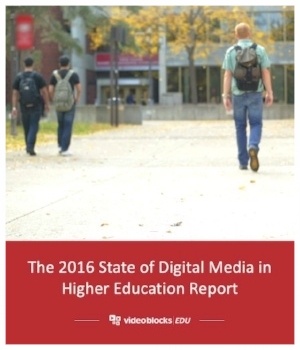
Open Educational Resources are often touted by educators and Open Resource advocates as the solution to the multimedia and digital literacy gap in the classroom. Yet, almost fifteen years after OER were first introduced, what they are and how schools and teachers can access them remains as hazy as ever. To help cut through the confusion, we’ve examined both the benefits and drawbacks of using OER, and we offer one solution to the challenges that they present.
What Are Open Educational Resources?
First coined and defined by the United Nations Educational, Scientific, and Cultural Organization (UNESCO) at its 2002 Forum on Open Courseware, OER encompasses “teaching, learning and research materials in any medium, digital or otherwise,” that educators can access to build and enhance their classroom curriculums.
Born out of the same Open Resources movement that has brought us Open Data and Open-source Software such as Open Office and Mozilla Firefox, OER are educational resources with limited or no copyright protections, making them more accessible to educators. According to UNESCO’s definition, these resources either “reside in the public domain or have been released under an open license” thus allowing the “use, adaptation and redistribution by others with no or limited restrictions.”
In the almost fifteen years since the Forum on Open Courseware first described OER, the definition has come under some debate, in large part due to the continued evolution of our digital resources. Because OER, as defined by UNESCO, are intended to continue working within the “existing framework of intellectual property rights,” their availability and access are directly dependent on our understanding of copyright legislation and fair use as they apply to new and emerging technologies.
What Are the Benefits of OER?
To many educators and administrators, the benefits of OER may seem self-evident—with schools and instructors constantly pressed for money, time, and human resources, there is a great need for easily accessible digital media, tools, and courseware.
As educational nonprofit EDUCAUSE has pointed out, because OER give educators access to needed resources, they encourage “pedagogical innovation, introducing new alternatives for effective teaching.” At the same time, they also, “expose students and instructors to the long tail of content, most of which never finds its way into widespread educational use.” As a result, OER enrich classroom content and curricula, providing students and teachers with more diverse and more accessible resources than ever before.
What Are the Challenges of OER?
As laudable as the ideals of the Open Resource and OER movement are, the reality often falls short for two very important reasons: availability and accessibility.
While in many ways OER are meant to make educational resources more “open” by circumnavigating the difficult gray areas of copyright and fair use, that does not mean they are readily available to everyone. Because most resources are spread out and diffuse, scattered across the Internet or throughout local libraries, it can be extraordinarily hard for many educators to find and tap into that important “long tail of content” that EDUCAUSE described.
Additionally, access may still be limited based on copyright concerns, depending on the country of origin or access. Many countries and governing bodies do not agree on what materials, digital or otherwise, qualify as OER or how they relate to local and international copyright laws. Some restrict the definition of OER solely to digital resources while others include textbooks, course syllabi or actual courses, and educational modules. There is also some disagreement about whether the resources must have been originally intended for educational use or if they can qualify if they are simply repurposed. As a result of these murky definitions, OER may not actually be any more “open” or available to educators than traditional copyrighted materials that fall under fair use.
The Solution—Resource Management
OER and digital asset management is one way of combating the difficulties of using open resources in the classroom. The challenge itself is not so much a question of whether OER are worth using, but rather, whether they are worth the sunk time and effort spent in searching them out and making sure that they are truly “open” and intellectual property law-compliant.
Resource management is the surest way to address both concerns, providing copyright-vetted assets, tools, and courseware through an accessible, centralized, and searchable index. As such, managed OER infrastructure is just as important, if not more so than the OER assets themselves. In doing so, resource management provides easy access not only to current courseware and digital tools, but also ensures continued access to the evolving resources of the future.


